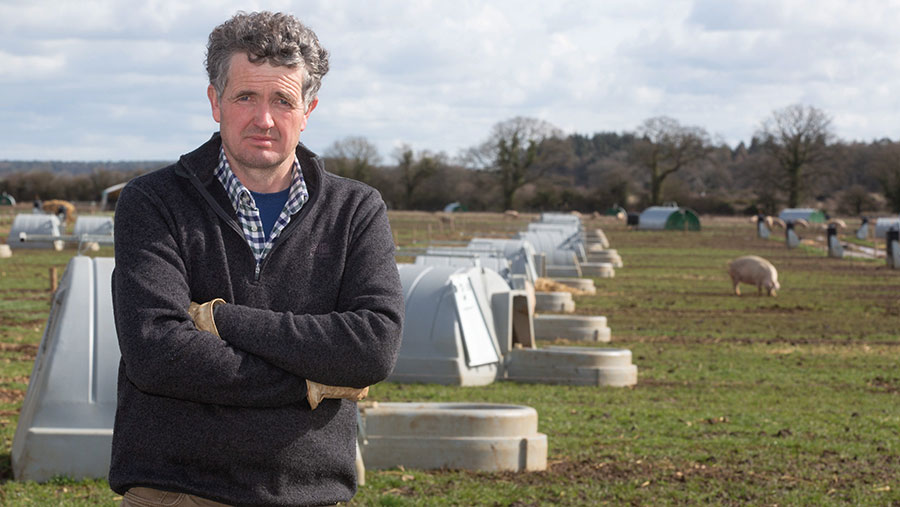Farmer Focus: Payment change in pursuit of heavier piglets
 © Tim Scrivener
© Tim Scrivener For the first time in more than a decade there have been a few tweaks made to the way our piglet payment is calculated.
The basic payment we receive has previously had top-ups for vaccinating, maintaining green cover on paddocks, and split-sexing piglets. But now we have some useful performance-linked bonuses available.
The most significant is a target weaning weight for piglets. There is a weight for winter months and a slightly lower one for summer, thankfully. If we exceed a set average weight, we get paid extra.
See also: Post-weaning scour in pigs – causes, signs and treatment
This move supports the group’s recent switch to older weaning at five weeks. As part of this, our piglets are creep-fed daily before weaning to help maximise piglet growth.
We were initially creep feeding for the last nine days of lactation. It has now been proven that starting a full two weeks before weaning has a significant effect on their final weight.
The amount fed starts quite small, as we don’t want leftover feed found by the sow. But once the piglets are reliably tucking in, which only takes a couple of days, we increase the amount given rapidly.
They are soon eating more than 100g each a day, and by adding those extra four or five days, we are getting an extra half a kilo into them, which is great for the weaning weight.
The other important consideration is ensuring mothers have enough clean, fresh drinking water available to maximise milk production.
We use sealed tanks with nipples on – not open water troughs. This means our sows get the best water possible and we know they drink much more than they would if it was dirty trough water.
It’s important to monitor flow rates through the nipples as this can change over time. If a nipple is pressed open by hand, a flow rate of 2 litres a minute is required.
I have realised that, when sows drink from a nipple, they suck just as they do when they drink from a trough.
So, I’ve assembled a piece of kit to allow me to discover, once and for all, just how much sows really drink in a minute. My guess is it’s a lot more than the two litres everyone is asking for.

